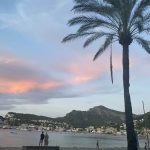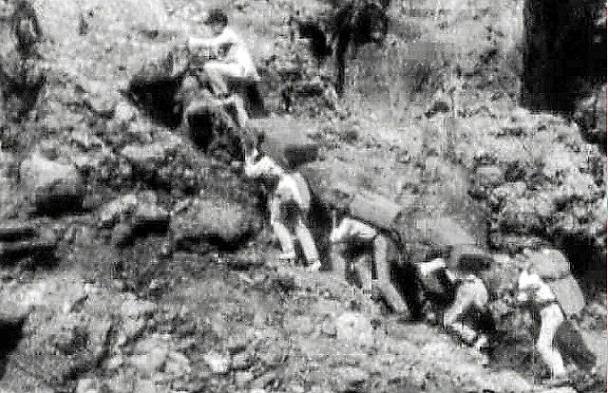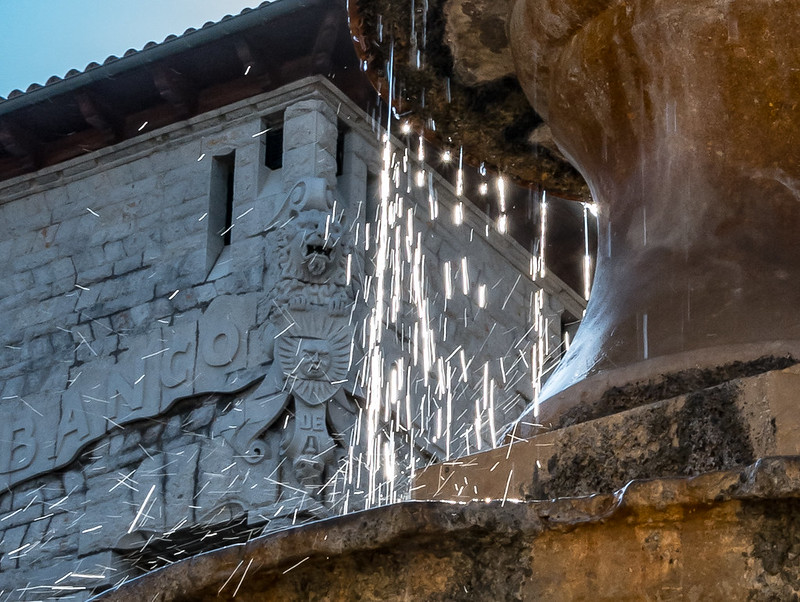An interesting perspective taken from Majorca Magazin
by Gabriele Kunz
Photograph from Ultima Hora
Smugglers have the flair of romanticism. The best example of this is the opera “Carmen”. Smugglers stripes – supposedly – through the mountains, crossing borders, disregard the current rules, all have freedom in the world. How much of the smuggling – at least those of the past – people interested to this day, shows the fact that a new book “Contraban, corrupció y estraperlo (1939-1975)” recently was the best-selling work in Catalan at the Book Fair of Palma.
“Contraband,” says author and historian Pere Ferrer, “has a long tradition in Mallorca. Whoever speaks of the historical development of the island, must also speak of piracy. And on the geographical location, the smuggling and piracy favored as well as centuries later tourism. “
Mallorca is and was an open island with open bays, promontories, formerly deserted beaches and many small coves that are only accessible by sea. How much of the smuggling is rooted on the island, for example, shows the name of the largest natural beach in the south of Es Trenc. He was the most famous smugglers beach. Today, he has only the reference of his name. Es Trenc means namely blow, blow, laceration. Gone are the days where here the Guardia Civil lay in wait for smugglers to head them back into the sea.
Smuggling was widespread throughout the island, from the Cala de Deia and the cliffs around to Soller including the Port de Valldemossa to many hidden coves. “But most of all on the coasts of Llombards and Ses Salines,” says Pere Ferrer. “There lay the organizational base, there was operating the Companyia de Sa Vall in Can Verga. Hiding as the many crevices were used.”
Smuggling in Mallorca began in the 17th century, when Spain monopolized the tobacco trade. In the 18th century, when the smuggling throughout Spain established, railed vehemently against church and state, made the outbreak of diseases responsible, but without the slightest effect. From that time until the beginning of the 20th century came alongside tobacco and cigars also products from overseas, especially from America. Gradually, the export opportunities, supply and demand were growing improved.
Especially after the Spanish Civil War (1936-1939), were rationed as food in the country. The smugglers profited from the rising demand for flour, biscuits, oil, sugar, coffee, noodles and dried fruit. In the 1960s, with the advent of tourism, especially tobacco and coffee were in demand. They came mostly from Gibraltar and North Africa.
This was well into the 1980s. American cigarette brand Marlboro or Winston have now been produced in Spain. However, many smokers swore that the originals from the U.S. taste better. That kept the cigarette smuggling alive. As late as 1985 could be “original” Buy cigarettes in bars, and on the Borne sat occasional seller, they offered individually. No one knew and no one knows exactly how many fags came from the USA secretive ways to Mallorca.
The demand for goods that you did not get in earlier times on the island, was awakened by American films. Here the Mallorcan saw all the glories, of which they themselves were dreaming soon. Soap brand Lux, nylon stockings, motors, transistor radios, clocks or razors. And very important: Vinyl with the latest hits, and later whiskey or gin.
Many bootleggers knew that you could get better prices directly to the consumer via the small local shops in the country or from local women selling from home.
As a means of transport at that time especially the trains were used on the island for which it was far more routes 1940-1960 than it is today. Every morning at 8.40 clock, for example, drove a train to Sa Pobla, who was often fully occupied with bootleggers. They took boxes and boxes, with sacks and bundles in the north of the island in search of the fast peseta. Some were already on the way their products go, for some women drove the route from only for the purpose of purchasing. The ladies of the oldest profession in the world were to be found here. They paid in the only currency available to them.
Some bootleggers chattered Fincas from individually, others had friends or friends of friends in small shops or venues that further mediated the goods. Often they also brought trade goods back to Palma. Which, of course, no one was supposed to know from the official side.
So they threw just before the arrival in Palma which in turn bulging bags from the train. Often these “programs” have been collected directly by the recipient or by intermediaries. If it were a commodity for which no buyer was found, the dealer had to go exploring on foot back and scour the route along the railway tracks themselves. But sometimes waiting there already, the Guardia Civil or representatives of the tax authorities. Smaller traders were easy prey for the police, because they enjoyed no protection whatsoever of “organization”. And if the officials themselves enriched themselves in the illegal goods, there was no opposition.
The profit margins were enormous, even if many small middlemen, transporters and sellers had to be paid. Many organizations Expensive illicit trafficking had towards respectable to the outside companies. Everything went with a handshake, without any paper and on trust on. Many large landowners kept a part of the harvest for direct sales to smugglers. Or they invested purely speculative sums up to 100,000 pesetas. The smugglers shared the profit, without providing some form of “accounting”. Trust for trust.
At the beginning of the 20th century, the “Carabineros” in police stations were concentrated at strategic points; in 1940 took over the Civil Guard this task. One of the known up to today in trippers stations is located on the Puig Roig in the municipality of Escorca: “From there you can see a large part of the Tramuntana mountain overlook,” says Pere Ferrer. “Funnily enough, this station is located on the grounds of Finca ‘Mossa’, which now belongs to the heirs of one of the biggest smugglers of the island, Joan March.”
Who was caught, was badly hurt. “Who bought even a single kilo of coffee on the black market, was up to 50 days and be sent to a labor camp. Or he had to pay. Between 500 and 1000 pesetas. Hardly anyone could, because the average daily wage was ten pesetas . Bosses were rarely prosecuted, because they successfully collaborated with the authorities. ” The labor camps that are called “Batallones” called, are out of the island. There the men languished in forced labor, poor nutrition under miserable conditions. Women who were caught, had to work in hospitals near their homes, so they could care for their children.
The largest company for smuggling was Can Verga, which was controlled by Biel Burguera, a confidant of Joan March: “He was the same pillion by Antoni Fontanet who made a fortune with Café Rico, Harina Fontanet and with several companies for feed grains,” tells Pere Ferrer. “Jaume Moll, who also belonged to the March empire, earned a lot of money, which he later invested in the hotel chain Royal Tour and the Real Estate Company Alcazar.” The Sans brothers from Ses Salines or Gotzos from Valldemossa set up similar companies.
After the death of Francisco Franco in 1975, the traditional smuggling became less and less. Finally, under Prime Minister Felipe González, it finished. Then the drug trade began to flourish and continues to be the challenge to the authorities in 2014 and for the future.








